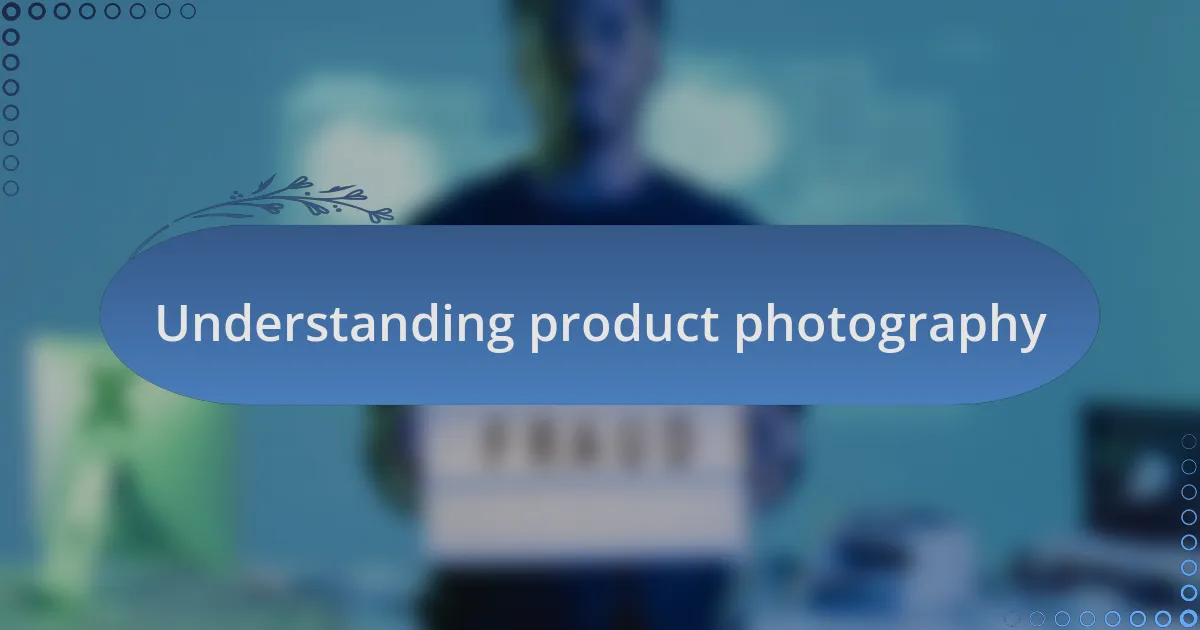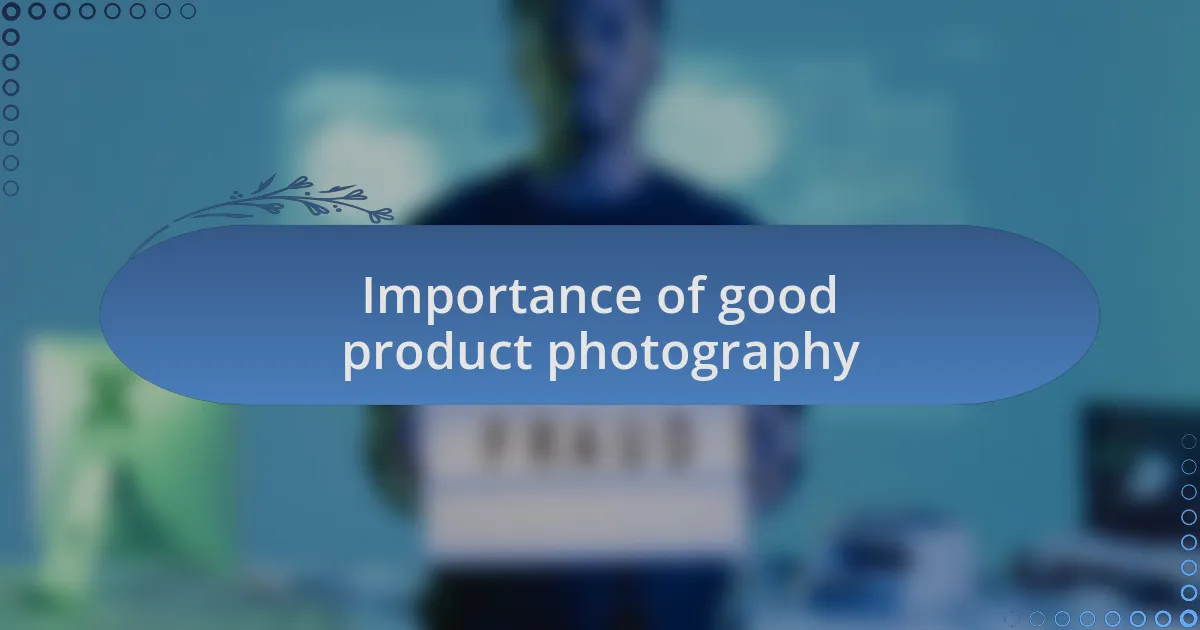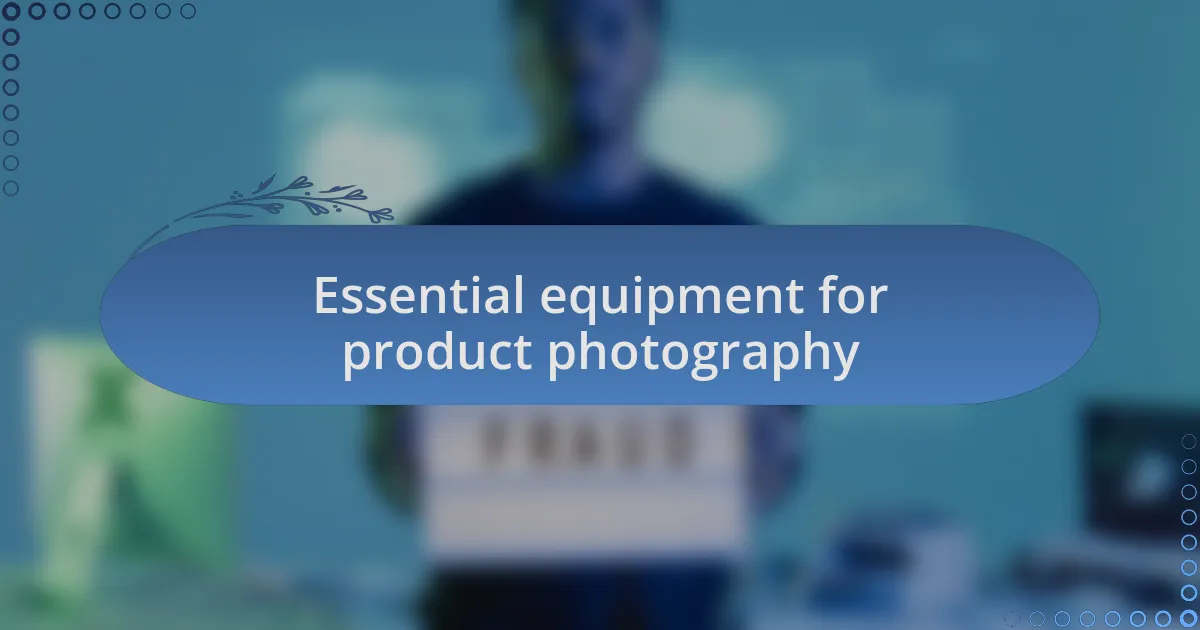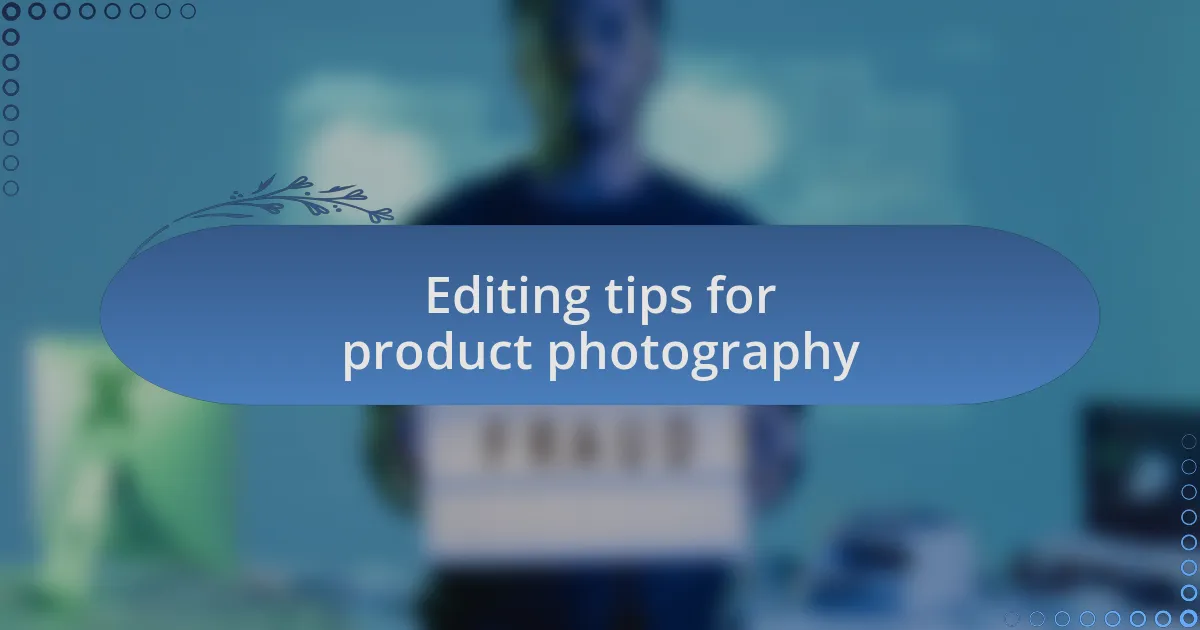Key takeaways:
- Product photography combines technical skills and emotional storytelling, influencing consumer perception and connection to the brand.
- High-quality images are essential for establishing trust and building brand identity, significantly impacting consumer engagement and purchase decisions.
- Using the right equipment, including a good camera and appropriate lighting, enhances product visibility and image quality.
- Editing plays a crucial role in refining product images through techniques like cropping, color correction, and removing imperfections to improve overall appeal.

Understanding product photography
Product photography isn’t just about snapping images of items; it’s an art that helps convey a brand’s story. I recall my first serious attempt at photographing products. I was overwhelmed by how lighting could drastically alter the way a product looked. Have you ever noticed how a simple shadow can either draw attention or detract from a product? It’s all part of understanding the nuances behind the lens.
Creating compelling product images involves more than just technical skills; emotions play a crucial role too. I remember working on a project for a local artisan. The challenge was to capture the warmth and authenticity of handmade goods. It made me realize that the right set, colors, and composition can evoke feelings, encouraging potential buyers to connect with the product on a deeper level. Isn’t it fascinating how a well-crafted image can spark desire?
Focusing on details is paramount in product photography; even the smallest element can change a viewer’s perception. When I started refining my technique, I learned the significance of showcasing textures, reflections, and angles. I often ask myself: what details are essential for the consumer to see? By articulating the uniqueness of each product through careful observation, I’ve seen how much more effective the photos can become in driving engagement. Have you tried capturing those details in your own work?

Importance of good product photography
Good product photography is vital because it can make or break a consumer’s first impression. I recall a time when I viewed a stunning image of a product online, and it instantly drew me in. Have you ever clicked “add to cart” purely based on an image? That’s the power well-executed photography carries; it can evoke curiosity and desire even before someone reads the product description.
Additionally, high-quality images build trust between the brand and the buyer. I once worked with a client whose product images were lackluster and uninviting. We updated the photos, focusing on clean backgrounds and natural lighting, and I noticed a marked increase in engagement and inquiries. Isn’t it interesting how professional imagery not only enhances aesthetics but also assures potential buyers that they’re investing in quality?
Lastly, effective product photography captures the essence of a brand’s identity. I remember feeling particularly proud when I managed to highlight my client’s unique selling points through visual storytelling. When potential customers can see the narrative behind a product, it creates a stronger connection. Have you thought about how your images communicate your brand’s message? This connection often translates into loyalty and repeat business.

Essential equipment for product photography
When it comes to product photography, having the right equipment is essential. A good camera can significantly elevate your shots. I’ve found that using a DSLR or a mirrorless camera gives me the flexibility I need to adjust settings for different lighting conditions. Investing in a tripod has also been a game changer for me, as it helps eliminate blurry images and allows for consistent framing.
Lighting plays a crucial role in photography. I can’t emphasize enough how beneficial it is to have softbox lights or a light tent. These tools help diffuse harsh shadows, making products look their best. I once took a photo of a jewelry piece using natural light, but it just didn’t do the intricate details justice. Switching to artificial lighting transformed the image, showcasing the product’s brilliance.
Lastly, consider your background and props as part of your essential toolkit. Clean, uncluttered backgrounds are vital; they draw focus to the product itself. I’ve experimented with various materials, and I’ve found that a simple white backdrop or textured fabric can dramatically change the feel of an image. What’s your go-to choice for showcasing products?

Editing tips for product photography
Editing is a critical step in product photography that can truly enhance your images. I’ve discovered that basic tools like cropping can make a huge difference in composition. For example, when I cropped an image of a handmade vase, it went from simply showcasing the product to creating an engaging focal point, pulling the viewer’s attention right where it needed to be.
Color correction is another vital aspect of editing. I often find that colors in photos, especially with products that have intricate hues, do not always reflect the reality. When editing a recent shoot of colorful sneakers, I adjusted the saturation to ensure the vibrant shades popped just right without looking unnatural. Have you ever noticed how off colors can mislead potential buyers?
Lastly, consider using skin retouching techniques, even when working with inanimate objects. The first time I edited a wooden kitchen table for a client, I was amazed at how removing minor imperfections elevated the overall image quality. It made the table appear more inviting and warm, resonating better with potential customers. Are there moments in your editing journey where a little tweak made all the difference?